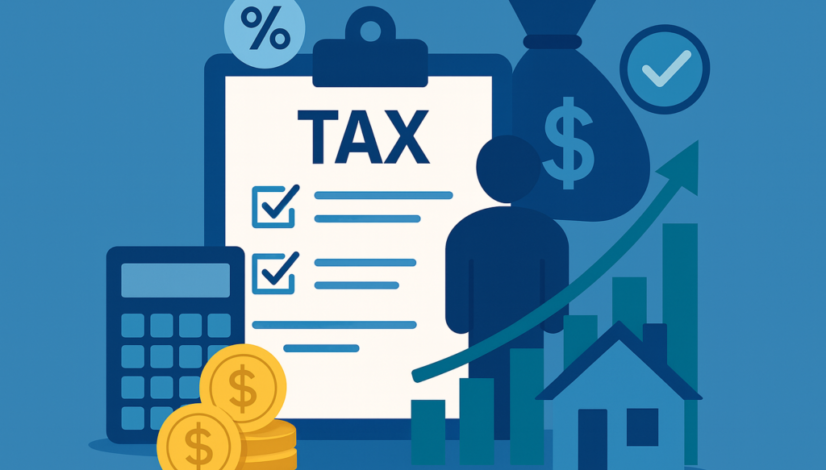One Big Beautiful Bill: What the 2025 Tax Reform Means for Individual Taxpayers
Introduction
In July 2025, the U.S. enacted the One Big Beautiful Bill, a major piece of tax legislation that builds on and makes permanent many provisions of the 2017 Tax Cuts and Jobs Act (TCJA). In addition to locking in favorable income tax rates, the bill introduces targeted deductions, higher thresholds, and expanded credits to provide relief to working families, seniors, and taxpayers in high-cost states.
For individuals, these changes bring both immediate opportunities and long-term planning implications. While some benefits are permanent, others are temporary and will require careful timing to maximize their value. This guide provides a detailed breakdown of the most important changes and what they mean for your finances.
Key Permanent Provisions
1. Income Tax Rates Locked In
The current seven tax brackets ranging from 10% to 37% are now permanent. This removes the uncertainty that was set to occur in 2026 when TCJA rates were scheduled to expire, allowing individuals to plan with confidence for income, investments, and retirement withdrawals.
2. Higher SALT Deduction Cap
The federal deduction cap for state and local taxes (SALT) increases from $10,000 to $40,000 starting in 2026, indexed to inflation through 2029, before reverting to $10,000 in 2030. This change is particularly impactful for residents in high-tax states, where property and income taxes often exceed prior limits.
3. Increased Standard Deduction
For tax years 2025 through 2028, the standard deduction rises to $15,750 for individuals and $31,500 for married couples filing jointly, with annual inflation adjustments. This boosts take-home pay for households who do not itemize deductions.
4. Expanded Child Tax Credit
The child tax credit increases to $2,200 per qualifying child, with up to $1,400 refundable. The phaseout thresholds remain at $200,000 for single filers and $400,000 for joint filers. The $500 non-refundable credit for dependents other than qualifying children remains available.
5. Increased Estate & Gift Tax Exemptions
The exemption for estate and gift taxes is set at $15 million per individual or $30 million for married couples starting in 2026, with annual inflation adjustments. This provides significant estate planning opportunities for high-net-worth families.
Temporary Provisions (2025–2028)
1. Bonus Deduction for Seniors
Taxpayers aged 65 and older with income over $75,000 ($150,000 for joint filers) can claim an additional $6,000 deduction. This targeted relief is available through the 2028 tax year.
2. Tip Income Deduction
Workers in tip-based industries can deduct up to $25,000 in reported tips annually. This applies to both W-2 employees and independent contractors, provided the income is properly reported on tax forms. The deduction phases out for those earning over $150,000 (single) or $300,000 (joint).
3. Overtime Income Deduction
Taxpayers may deduct up to $12,500 ($25,000 for joint filers) in qualified overtime wages, as long as they are separately reported on W-2 or 1099 forms. Like the tip deduction, this provision phases out at higher income levels.
4. Auto Loan Interest Deduction
Interest paid on loans for qualifying U.S.-assembled passenger vehicles purchased after December 31, 2024, is deductible. Specific vehicle eligibility requirements apply.
Phase-Out of Clean Energy Incentives
The bill accelerates the phase-out of many clean energy tax credits, including those for electric vehicles, solar panels, and home energy improvements. Credits begin expiring as early as September 30, 2025, and will be fully eliminated by January 1, 2028. Taxpayers considering such purchases should act quickly to take advantage of current incentives.
Strategic Planning Considerations
With the One Big Beautiful Bill offering a mix of permanent and temporary provisions, taxpayers should consider:
- Timing income and deductions to capture temporary benefits before they expire in 2028.
- Maximizing SALT deductions during the higher-cap years if living in a high-tax state.
- Reviewing estate plans to align with the increased exemption thresholds.
- Exploring eligibility for new deductions related to tips, overtime, and vehicle interest.
Conclusion
The 2025 tax reform represents a significant update to the U.S. tax code, with the potential to lower liabilities, improve after-tax income, and create strategic planning opportunities for individuals. While some provisions—like the permanent tax rates and higher estate exemptions—offer long-term certainty, others require immediate action to secure their benefits.
By understanding the scope of these changes and working with a qualified tax advisor, individuals can position themselves to maximize the opportunities provided by the One Big Beautiful Bill while avoiding costly oversights.





